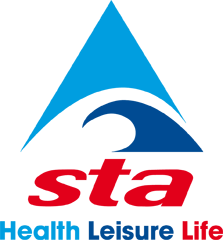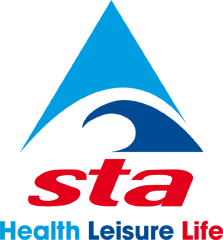Raising Awareness of Type 1 and Type 2 Diabetes
By Garry Seghers, STA Qualifications Development Manager
STA First Aid and Lifeguard training cover Diabetes from the point of view of high and low blood sugar levels, the possible signs and symptoms and treatment. This year I am raising money for Diabetes UK by taking part in a team swimming the English Channel and so have become more involved with their Care, Connect, Campaign. When fundraising at local supermarkets I had the opportunity to promote their work through posters asking ‘Are you at risk of TYPE 2 diabetes?’, and subsequently have learnt more about these classifications that I wish to share with you courtesy of the Diabetes UK website.
What is Diabetes?
Diabetes is a common life-long health condition. There are 3.2 million people diagnosed with diabetes in the UK and an estimated 630,000 people who have the condition, but don’t know it.
This is because your pancreas doesn’t produce any insulin, or not enough insulin, to help glucose enter your body’s cells – or the insulin that is produced does not work properly (known as insulin resistance).
- Insulin is the hormone produced by the pancreas that allows glucose to enter the body’s cells, where it is used as fuel for energy so we can work, play and generally live our lives. It is vital for life.
- Glucose comes from digesting carbohydrate and is also produced by the liver.
- If you have diabetes, your body cannot make proper use of this glucose so it builds up in the blood and can’t be used as fuel.
- There are two main types of diabetes: Type 1 and Type 2.
What is Type 1 Diabetes?
Type 1 diabetes develops when the insulin-producing cells in the body have been destroyed and the body is unable to produce any insulin.
Who typically gets Type 1 diabetes?
Type 1 diabetes accounts for about 10 percent of all adults with diabetes and is treated by daily insulin injections, a healthy diet and regular physical activity. Type 1 diabetes can develop at any age but usually appears before the age of 40, and especially in childhood. It is the most common type of diabetes found in childhood.
What is insulin?
Insulin is a hormone. It works as a chemical messenger that helps your body use the glucose in your blood to give you energy. You can think of it as the key that unlocks the door to the body’s cells. Once the door is unlocked, glucose can enter the cells where it is used as fuel. In Type 1 diabetes the body is unable to produce any insulin so there is no key to unlock the door, and the glucose builds up in the blood.
- The body can’t use glucose to provide energy and tries to get it from elsewhere and starts to break down stores of fat and protein instead. This can cause weight loss. Because the body doesn’t use the glucose it ends up passing into the urine.
- Nobody knows for sure why these insulin-producing cells have been destroyed, but the most likely cause is the body having an abnormal reaction to the cells. This may be triggered by a virus or other infection.
What is Type 2 Diabetes?
Type 2 diabetes develops when the insulin-producing cells in the body are unable to produce enough insulin, or when the insulin that is produced does not work properly (known as insulin resistance).
Who typically gets Type 2 diabetes?
Type 2 diabetes usually appears in people over the age of 40, though in South Asian people, who are at greater risk, it often appears from the age of 25. It is also increasingly becoming more common in children, adolescents and young people of all ethnicities. Type 2 diabetes accounts for between 85 and 95 percent of all people with diabetes and is treated with a healthy diet and increased physical activity. In addition to this, medication and/or insulin are often required.
In Type 2 diabetes there is not enough insulin (or the insulin isn’t working properly), so the cells are only partially unlocked and glucose builds up in the blood.
Type 2 diabetes in children
The vast majority of children with diabetes have Type 1 diabetes, but an increasing number are now developing Type 2 diabetes. The International Society for Paediatric and Adolescent Diabetes (ISPAD) has produced guidelines for the management of Type 2 diabetes in children; please go to www.ispad.org for further information.
I hope the above information is useful, if you wish to support my fundraising please go to: www.justgiving.com/garry-seghers3
Our team name is Tidetastic and we hope to swim between 6th – 15th September (depending on weather and tides). You can follow our progress at www.cspf.co.uk/tracking; our boat name is Gallivant, click on ‘latest track’!
- Categories
- Lifesaving and First Aid


